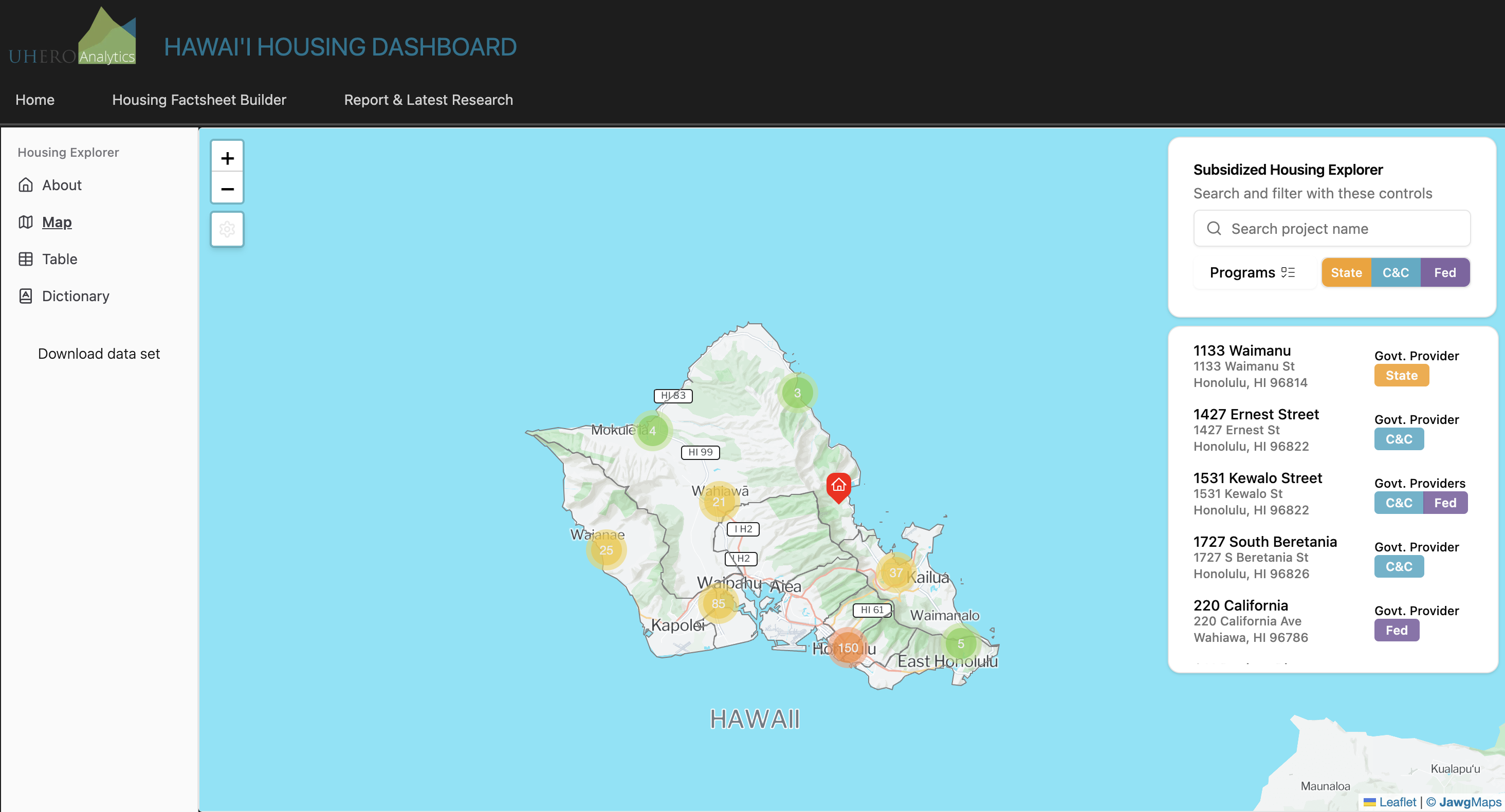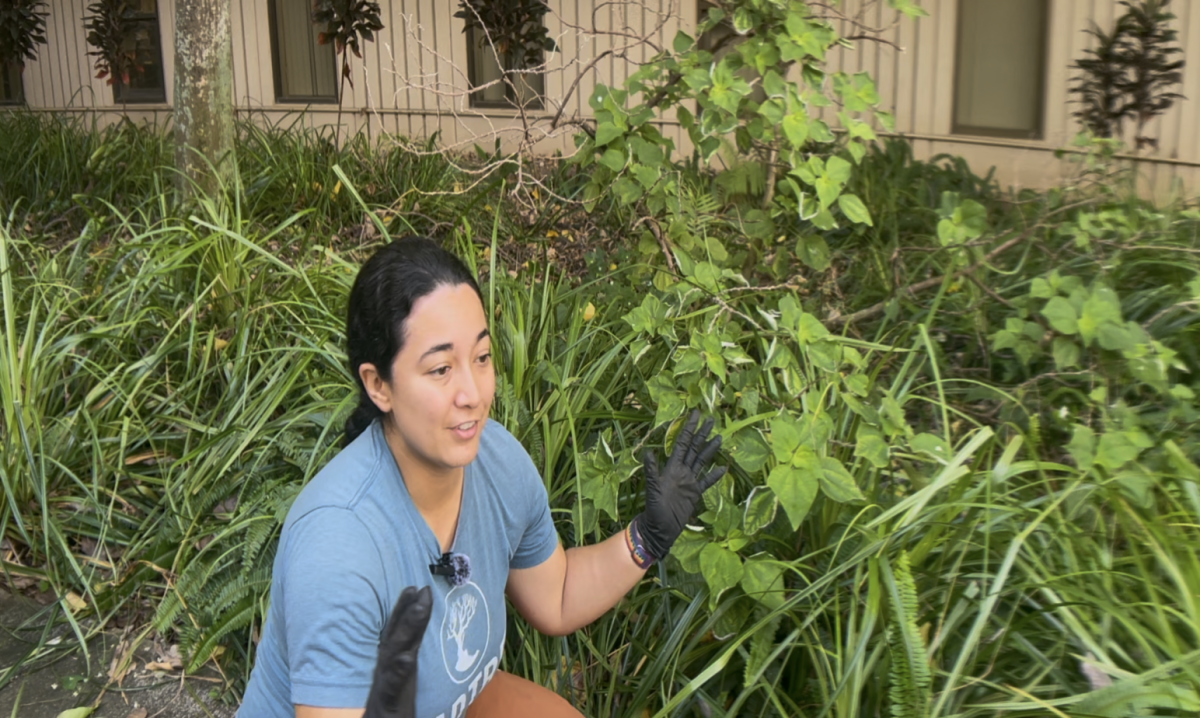
A new O’ahu housing database, designed to provide transparency and insight about government-subsidized housing, is nearing completion.
The Economic Research Organization at the University of Hawai’i (UHERO) is currently finalizing the database and has scheduled to present it to Mayor Rick Blangiardi this upcoming December.
This resource, initially announced in February 2023, is being developed in collaboration with the City and County of Honolulu to provide valuable insight for residents and policymakers.
“Getting data from state agencies has been difficult, and because of that, the database isn’t fully comprehensive. We’re still missing data and properties,” said Rachel Inafuku, the project lead and UHERO research economist.
Initially, there was consideration that the database might serve as a public tool for finding housing, but after discussions with key stakeholders and decision-makers, the purpose was refined. Now, the hope is that the housing database will better inform the community about Hawai’i’s current housing market, but with the focus of tracking government-subsidized housing units to educate and help hold city of Honolulu lawmakers accountable in developing strategies to build and preserve housing.
Inafuku explained that the database will keep the government accountable for how much they’re adding to housing affordability here in Hawai’i. While it is not designed for locating available units, it will include counts of units in properties and buildings that are a part of government programs offering below-market rents.
“It will track the progress of O’ahu to see if the money that they’re putting into these projects are actually resulting in reduced rent in certain buildings,” Inafuku said.
Caleb Wood, the project developer and UHERO lead software development & IT specialist, says the database currently holds less than 400 records, but the plan is for it to grow and evolve as time goes on, and be updated annually for accuracy. He created the database with the utmost priority of it being user-friendly, so it offers multiple formats: map views, table views, and downloadable CSVs.
“The database was all built to be interactive,” said Wood.
The system will feature an introduction written by Philip Garboden and include an open-source map tool that allows users to explore different housing units–although public, it primarily serves as an inventory of active units. Due to the gradual development of new buildings, updates to the database will only need to be made once or twice a year.
UHERO is unsure if they are going to be maintaining this in perpetuity, as it was initially conceived as a pilot project to encourage state agencies to become more data-driven. However, if they do, their hope is to implement an Application Programming Interface (API) to facilitate seamless, secure data exchange between applications and agencies and keep the database up to date.
“They wanted to emphasize that the database isn’t perfect and that we want to be contacted if you find a mistake,” said Wood.
Wood described a collaborative process during the database’s development, where drafts were sent to various agencies for review and feedback. This involved several rounds of revisions to address identified issues. The goal for the future is to create a system where agencies can update the data independently, but for now, the database remains static and updates must be communicated via email to [email protected].
Inafuku and Wood referred to this project as a foundational step in demonstrating the potential of leveraging government data.
“It’s kind of a first step at putting all of this together because all of these different subsidies and programs come from different agencies; this is the first time that anyone’s put them all in the same place,” said Wood.
“This is just the groundwork for what we could do with government data. If we try to increase the technology in our state offices and increase collaboration, we could do so much more to inform policy, and this is just a starting point,” said Inafuku.
UHERO, the only economic research think tank in the entire Pacific region, conducts research to inform better public policy here in Hawai’i. They are focused not just on the housing crisis, but multiple issues that are both central to Hawai’i and globally relevant.
The database is a relatively small project compared to UHERO’s broader efforts, the organization is mainly focused on significant work related to Maui’s recovery and analyzing the economic impact of the wildfires. This focus extends to examining construction litigation issues. Inafuku pointed out that legal actions are intensifying, with lawyers targeting developers nationwide, particularly in Hawai’i, for failing to use appropriate hurricane clips.
“It’s crazy and it’s adding more to the cost of housing, so we’re basically quantifying how much these lawsuits are increasing home costs by,” said Inafuku.








